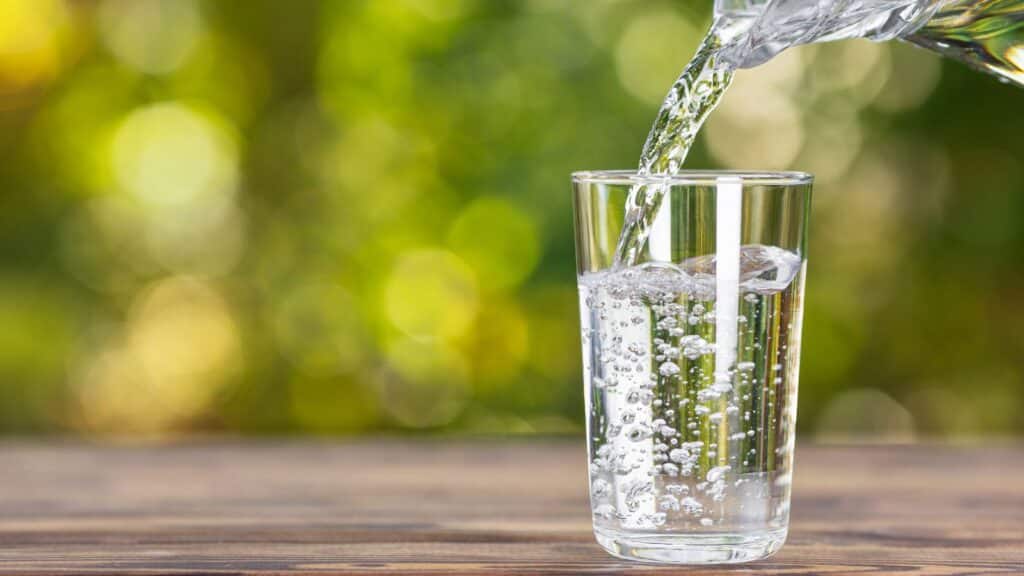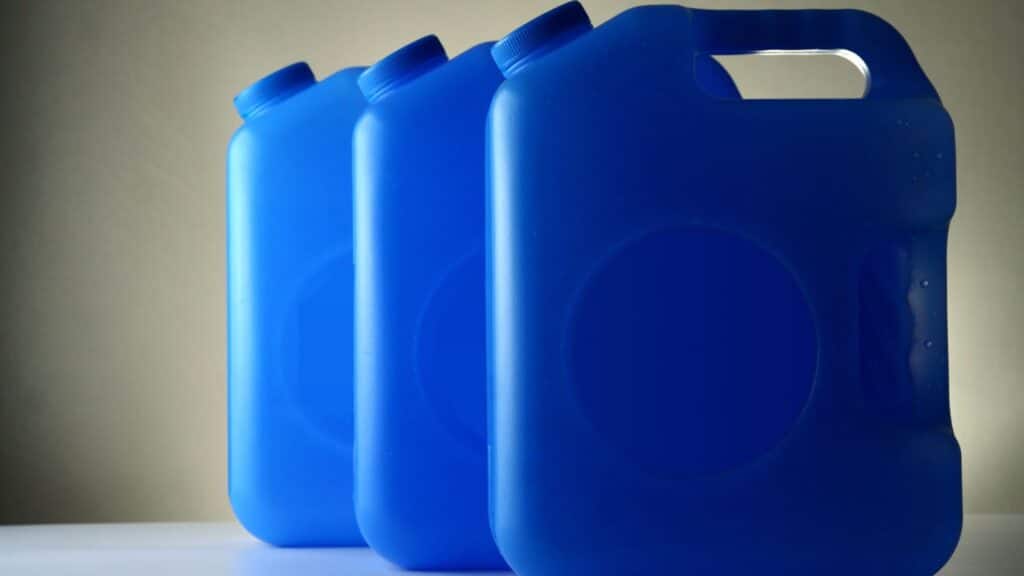Water is an essential part of your baby’s diet, especially when they start eating solid foods and drinking from a cup. However, ensuring that the water you provide is safe and stored correctly is crucial for your baby’s health and development. This comprehensive guide will help you understand the best practices for storing and using water for your baby.
Understanding the Importance of Safe Water for Babies
Babies are more vulnerable to contaminants in water due to their developing immune systems and smaller body sizes. Therefore, ensuring that the water they consume is clean and safe is paramount. Unsafe water can lead to various health issues, including gastrointestinal problems and, in severe cases, developmental delays.
Babies’ bodies are particularly sensitive to certain contaminants, such as lead, nitrates, and bacteria. These contaminants can come from various sources, including aging pipes, agricultural runoff, and inadequate water treatment. Ingesting contaminated water can lead to a range of health issues, from mild stomach upset to severe developmental problems.

Types of Water Suitable for Babies
Before diving into storage and usage, it’s important to know the types of water that are safe for your baby:
Tap Water
Depending on where you live, tap water may be safe for babies if it’s treated and regulated. However, it’s important to be aware of any potential contaminants. In some areas, tap water may contain high levels of lead, nitrates, or other harmful substances. Always check with your local water authority to ensure your tap water is safe for infant consumption.
Bottled Water
Many parents opt for bottled water due to its convenience and perceived purity. However, not all bottled waters are created equal. Look for those labeled as safe for infant consumption. Some bottled waters contain added minerals that may not be suitable for babies. It’s important to read labels carefully and choose products specifically designed for infants.
Filtered Water
Using a home water filtration system can remove many impurities from tap water, making it a safer option for babies. However, not all filters are created equal. Look for filters certified to remove common contaminants such as lead, chlorine, and bacteria. Regularly replace filters according to the manufacturer’s instructions to ensure effectiveness.
Distilled Water
Distilled water is free from most contaminants and minerals, making it a safe choice for mixing formula or for drinking. It is created through a process of boiling water and then condensing the steam, which removes impurities and minerals. However, because it lacks minerals, it should not be the sole source of water for older babies and toddlers.
Safe Storage Practices for Baby Water
Proper storage of water is crucial to prevent contamination. Here are some guidelines to ensure your baby’s water remains safe:
- Clean Containers: Always store water in clean, sterilized containers. Use glass or BPA-free plastic bottles with tight-fitting lids. Avoid reusing old bottles that may harbor bacteria. Sterilize containers by boiling them or using a sterilizing solution.
- Refrigeration: Store water in the refrigerator to prevent the growth of bacteria. If you’re using filtered or distilled water, keep it in the fridge and use it within 24 hours. Refrigeration slows the growth of bacteria, making the water safer for consumption.
- Avoid Direct Sunlight: Store water in a cool, dark place. Exposure to sunlight can promote the growth of algae and bacteria. Sunlight can cause the water to warm up, creating an environment conducive to bacterial growth.
- Use Fresh Water: Always use fresh water for your baby. If you’ve stored water for more than 24 hours, it’s best to discard it and replace it with fresh water. Stale water can harbor bacteria and other contaminants.
- Labeling: Label stored water with the date it was prepared to keep track of its freshness. This helps you ensure that the water you use is always fresh and safe for your baby.
Using Water for Baby Formula
When preparing baby formula, the quality of water is crucial. Follow these steps to ensure safe formula preparation:
- Boil Water: If you’re using tap water, boil it for at least one minute to kill any potential bacteria. Let it cool before mixing it with formula. Boiling water is an effective way to kill bacteria and other pathogens that may be present.
- Use Distilled or Filtered Water: Consider using distilled or filtered water, which is free from most contaminants and does not require boiling. This can save time and provide peace of mind that the water is safe.
- Follow Instructions: Always follow the formula manufacturer’s instructions for water-to-formula ratios. Using too much or too little water can affect your baby’s nutrition. Incorrect ratios can lead to dehydration or nutritional deficiencies.
- Immediate Use: Prepare formula as needed and avoid storing mixed formula for extended periods. If you must store it, keep it in the fridge and use it within 24 hours. Bacteria can grow in formula, especially if left at room temperature for too long.
- Clean Equipment: Ensure all bottles, nipples, and mixing equipment are thoroughly cleaned and sterilized before each use. This helps prevent bacterial contamination and ensures the safety of the formula.
Introducing Water to Your Baby
Around six months of age, you can start introducing small amounts of water to your baby, especially if they are eating solid foods. Here’s how to do it safely:
- Start Small: Begin with a few sips of water in a cup or bottle. Gradually increase the amount as your baby gets used to it. Introducing water slowly allows your baby’s digestive system to adjust.
- Use a Sippy Cup: Introducing a sippy cup can help your baby transition from a bottle and encourage independent drinking. Sippy cups are designed to be spill-proof and easy for little hands to hold.
- Monitor Intake: Babies should not consume large amounts of water as it can interfere with their ability to absorb nutrients from breast milk or formula. Stick to a few ounces per day initially. Too much water can dilute the electrolytes in your baby’s blood, leading to water intoxication.
- Observe Reactions: Watch for any signs of discomfort or gastrointestinal issues as your baby starts drinking water. Consult your pediatrician if you have any concerns. Every baby is different, and some may have sensitivities to certain types of water.
Signs of Dehydration in Babies
It’s important to ensure your baby stays hydrated, especially in hot weather or if they are unwell. Here are some signs of dehydration to watch for:
- Dry Mouth and Lips: If your baby’s mouth and lips appear dry, they may be dehydrated. This is one of the earliest signs of dehydration.
- Fewer Wet Diapers: A decrease in the number of wet diapers can indicate dehydration. Babies typically have six or more wet diapers a day. Fewer wet diapers suggest that your baby is not getting enough fluids.
- Sunken Soft Spot: The soft spot on the top of your baby’s head may appear sunken if they are dehydrated. This is a more severe sign of dehydration and requires immediate attention.
- Lethargy: Dehydration can cause your baby to be unusually sleepy or lethargic. If your baby is less active than usual, it may be a sign of dehydration.
- Crying Without Tears: If your baby cries without producing tears, it could be a sign of dehydration. Tear production is an indicator of hydration status.
If you notice any of these signs, it’s important to seek medical advice promptly. Dehydration can escalate quickly in babies and requires prompt attention.
Best Practices for Travel
When traveling with your baby, maintaining water safety can be challenging. Here are some tips:
- Carry Bottled Water: Always carry enough bottled water labeled as safe for infants. This ensures you have a reliable source of clean water. Having a supply of safe water can prevent the need to use potentially unsafe local water.
- Portable Sterilizers: Use portable bottle sterilizers to ensure your baby’s bottles and feeding equipment remain clean. This is especially important if you’re traveling to areas with questionable water quality.
- Check Local Water Quality: If traveling internationally, research the local water quality and consider using bottled or boiled water for your baby. Different countries have different standards for water safety.
- Hydration in Transit: Offer small sips of water frequently during travel, especially on long flights or car rides. Keeping your baby hydrated during travel can prevent discomfort and dehydration.

Conclusion
Ensuring the safe storage and use of water for your baby is essential for their health and development. By following these guidelines, you can provide your baby with the best possible hydration while minimizing the risk of contamination and health issues. Always prioritize clean, safe water, and consult your pediatrician with any concerns regarding your baby’s water intake.
Ensuring your baby’s water is safe involves understanding the different types of water, proper storage practices, safe formula preparation, and recognizing signs of dehydration. With these guidelines, you can confidently provide your baby with the hydration they need to grow and thrive. Safe water practices are a key part of ensuring your baby’s health and well-being.



